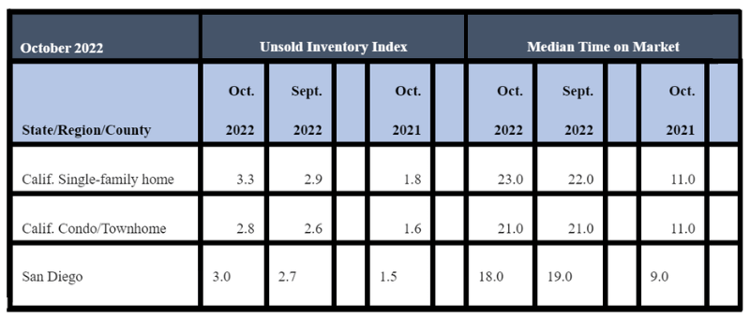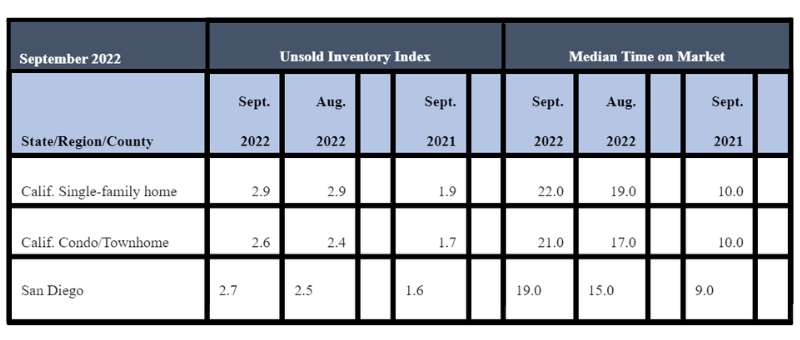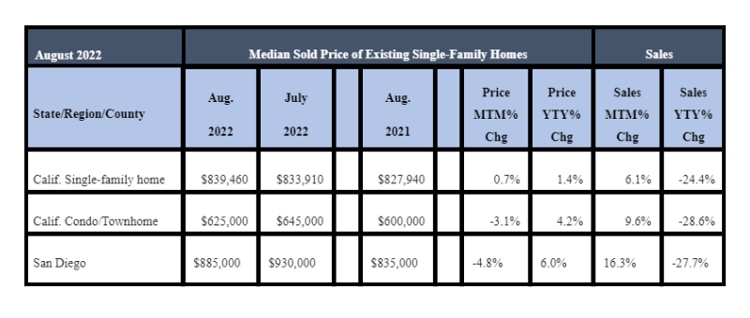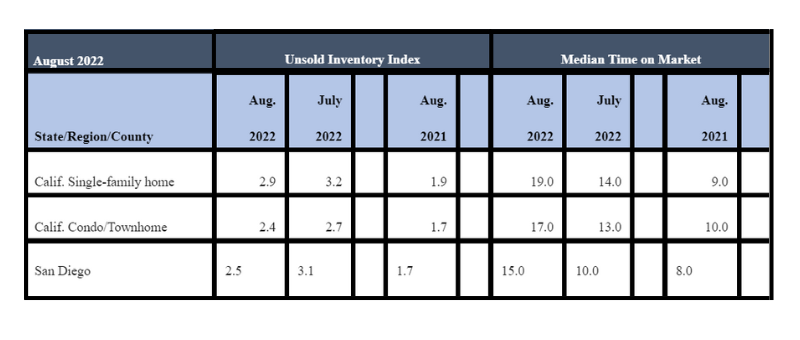
For the first time in seven months, median home prices in California in March 2023 recorded a healthy increase on a month-to-month basis while higher interest rates held home sales essentially flat, according to the latest home sales and price report from the California Association of REALTORS® (C.A.R.).
In San Diego, both home sales and home prices were higher in month-over-month comparisons between March 2023 and February 2023.
Existing, single-family home sales in San Diego County increased in March 2023 by 34.9 percent in a month-over-month comparison with February 2023. However, in a year-over-year comparison between March 2023 and March 2022, home sales in San Diego County decreased by 32.1 percent.
March 2023 County Sales and Price Activity
(Regional and condo sales data not seasonally adjusted)
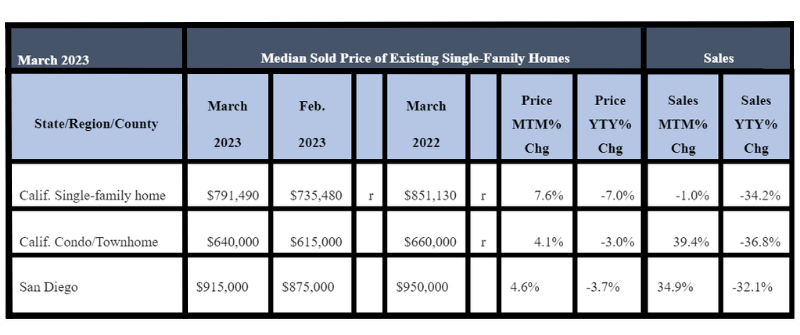
Meanwhile, the median sales price for an existing, single-family detached home in San Diego County increased in March 2023 to $915,000, compared to $875,000 in February 2023, a 4.6 percent difference. In a year-over-year comparison, the median price was $950,000 in March 2022, a 3.7 percent difference.
Statewide, the March 2023 sales pace for existing, single-family homes was down 1.0 percent on a monthly basis from February 2023, and down 34.2 percent from March 2022.
Closed escrow sales of existing, single-family detached homes in California totaled a seasonally adjusted annualized rate of 281,050 in March 2023, according to information collected by C.A.R. from more than 90 local REALTOR® associations and MLSs statewide. The statewide annualized sales figure represents what would be the total number of homes sold during 2023 if sales maintained the March pace throughout the year. It is adjusted to account for seasonal factors that typically influence home sales.
March’s sales pace of 281,050 homes sold was down slightly from 284,010 homes sold in February 2023 and down 34.2 percent from a year ago in March 2022, when a revised 427,040 homes were sold on an annualized basis. Sales of existing single-family homes in California remained below the 300,000-unit pace for the sixth consecutive month.
Year-to-date statewide home sales were down 37.8 percent in March 2023.
Also statewide, the median home price in March 2023 increased by 7.6 percent to $791,490, compared to $735,480 in February 2023. The March 2023 median price was 7 percent lower than the $851,130 price posted in March 2022. The statewide median home price in Mach was lower on a year-over-year basis for the fifth consecutive month. The median is the price at which half of the homes sell for more and half for less.
With home prices rising more sharply than the normal seasonal pattern last year, the market could see larger year-over-year price drops as it moves through the spring home-buying season.
“Despite a dip in March home sales, the competitiveness in the housing market continues to heat up, as homes are selling faster, and the sales-to-list-price ratio is improving, all the while when the number of homes available for sale continues to tighten,” said C.A.R. President Jennifer Branchini, a Bay Area REALTOR®. “All signs point to a market with solid demand, which should help bolster sales through the homebuying season.”
“While home sales continue to hover below the 300,000-unit annualized pace, the market seems to have weathered more aggressive rate hikes and banking failures quite well in the last few weeks,” said C.A.R. Vice President and Chief Economist Jordan Levine. “If interest rates stabilize or even improve in the next couple of months, home sales should rise during the spring home-buying season, but tight inventory will prevent a rapid rebound.”
Other key points from C.A.R.’s March 2023 resale housing report include:
-- At the regional level, all major regions recorded year-over-year sales declines. Southern California declined 33.8 percent from March 2022. Extreme weather conditions had a negative impact on the housing market, which contributed to sharp sales declines in some counties.
-- At the regional level, median home prices dropped from a year ago in all major regions. Southern California home prices declined by 4 percent in March 2023.
March 2023 County Unsold Inventory and Days on Market
(Regional and condo sales data not seasonally adjusted)

-- Housing inventory in California slipped on a monthly basis for the second straight month from 3.2 months in February 2023 to 2.2 months in March 2023, the lowest level since May 2022. The unsold inventory in March 2022 was 1.6 months.
-- In San Diego, in March 2023, the inventory of available homes for sale was 1.7 months, compared to 2.3 months in February 2023, 2.7 months in January 2023, and 1.4 months in March 2022. Other inventory figures in San Diego during 2022 include 2.2 months in December 2022, 2.9 months in November 2022, 3.0 months in October, 2.7 months in September, 2.5 months in August, 3.1 months in July, 2.4 months in June, 1.9 months in May, 1.6 months in April and 1.4 months in March. Inventory levels indicate the number of months it would take for the available supply of homes on the market to sell-out given the current rate of sales.
-- Home prices were higher in March 2023 in all price ranges compared to a year ago in March 2022. In March 2023, homes priced at $1 million or higher gained the most in unsold inventory (50 percent), followed by the $749,000-$500,000 price range (25 percent), $750,000-$999,000 price range (23.5 percent) and sub-$500,000 price range (16.7 percent).
-- Active listings in March 2023 continued to surge. Despite the increase in overall active listings, housing inventory is much tighter than what the yearly growth suggests. While new active listings added in March 2023 improved by 27.9 percent on a month-to-month basis from February 2023, the figure also declined 30 percent in a year-over-year comparison with March 2022. The drop in new active listings, was the largest dip since May 2020 when the pandemic shutdown took place.
-- The median number of days it took to sell a California single-family home was 19 days in March 2023, 17 days in February 2023 and eight days in March 2022.
-- In San Diego, the median number of days it took to sell an existing, single-family home was 12 days in March 2023, compared to 17 days in February 2023, 26 days in January 2023 and seven days in March 2022. Other median-time-on-the-market figures in San Diego during 2022 was 20 days in December, 18 days in both November and October, 19 days in September, 15 days in August, 10 days in July, eight days in June and seven days in May and April. The median represents a time when half the homes sell above it and half below it.in san
-- Once again, the statewide, sales-price-to-list-price ratio remained at below 100 percent in March 2023 at 99.1 percent, compared to 97.7 percent in February 2023 and 96.5 percent in January 2023. A year ago, in March 2023, the ratio was 103.9 percent. Other statewide ratio percentage figures during 2022 include 96.2 percent in December, 96.7 percent in November, 97.3 percent in October, 97.7 percent in September and 98.4 percent in August. The sales-to-list-price ratio is an indicator that reflects the negotiation power of home buyers and home sellers under current market conditions. The ratio is calculated by dividing the final sales price of a property by its last list price and is expressed as a percentage. A sales-to-list ratio with 100 percent or above suggests that the property sold for more than the list price, and a ratio below 100 percent indicates that the price sold below the asking price.
-- The 30-year, fixed-mortgage interest rate averaged 6.54 percent in March, up from 4.17 percent in March 2022, according to Freddie Mac.



-1.png?width=730&height=306&name=blog_220923_chart1%20(1)-1.png)
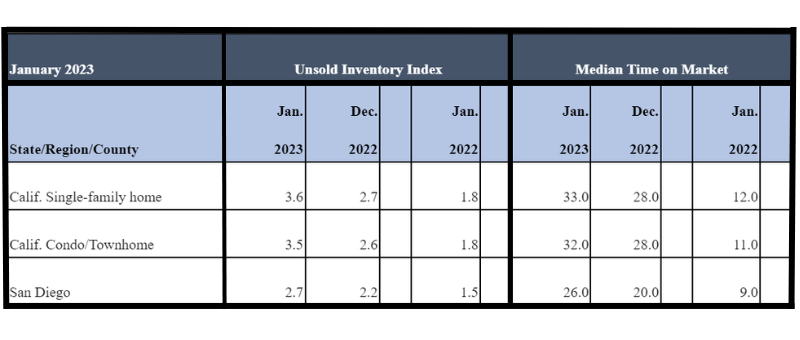


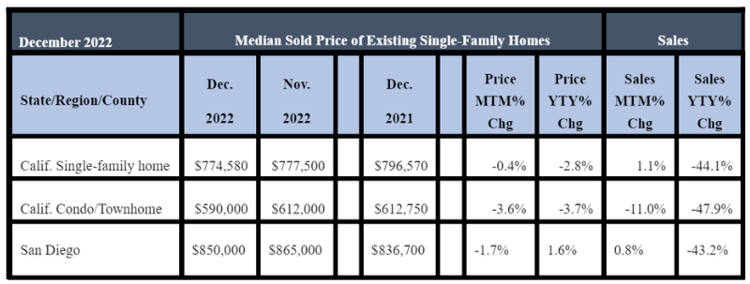

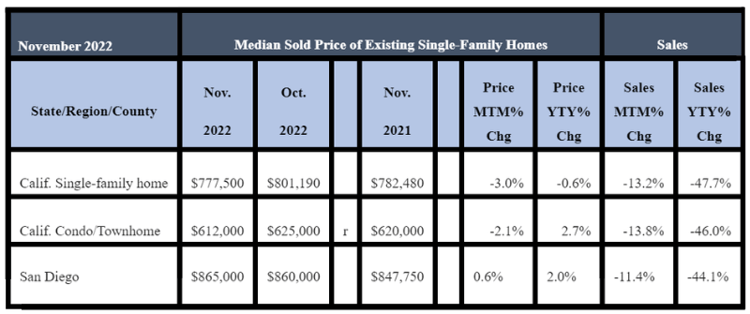
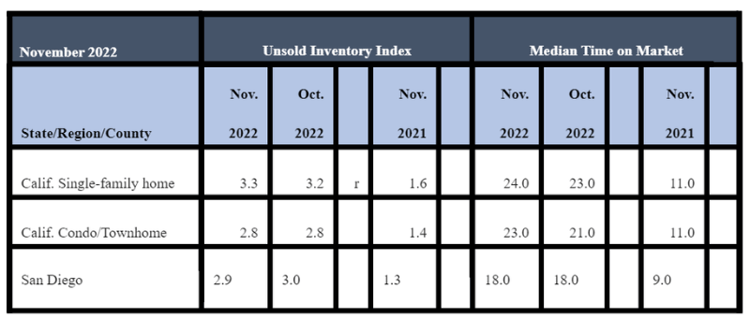
.png?width=750&height=314&name=blog_220923_chart1%20(1).png)
